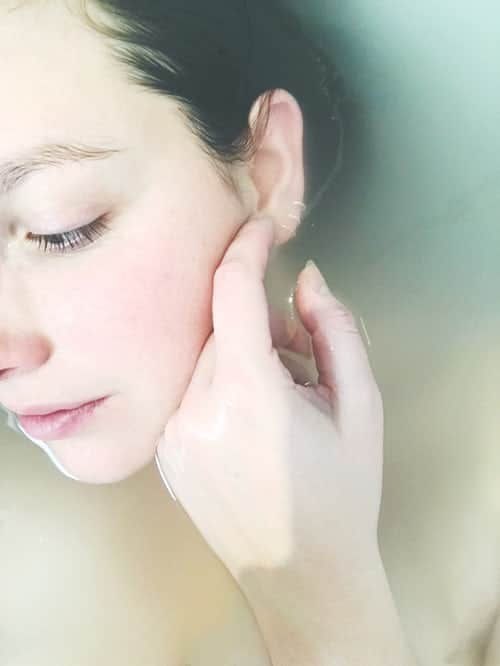Do you take spironolactone for your acne? If yes, this is the blog post for you. Read on to find out how to wean off of it and what to do if you experience side effects from stopping taking it.
Spironolactone is a common medication for acne used in conjunction with other medications or as a standalone treatment. However, there are many reasons why someone may want to stop taking it.
Some people may need surgery or have an adverse reaction after being on the pill for a while, and others may want to try something new. Whatever the reason, read below on how you can wean off of spironolactone and what symptoms you might experience when coming off of it.
What is Spironolactone? How Does it Work in the Body?
Spironolactone is an FDA-approved medication that’s effective in treating both acne and hormonal acne. It’s a potassium-sparing diuretic, or water pill, which means it blocks the hormone aldosterone that causes your body to lose potassium.
Some of these common medications include Aldactone (the generic name for spironolactone), Lasix (furosemide), and Bumex (bumetanide).
Spironolactone is mostly taken daily as a pill, or if your acne is severe, you may need to take it every other day. For example, in the case of Minocin (minocycline), you may need to take Minocin every other day in conjunction with spironolactone.
However, after taking it for some time, you can eventually get off the pill and use a topical treatment alone.
How to Wean Off Spironolactone?
If you are currently on spironolactone, your healthcare provider will most likely recommend that you gradually taper off of it or wean yourself off. Everyone’s body is different. The time it takes to eliminate spironolactone from your body fully may vary.
The amount of time it takes depends on how long you’ve been taking spironolactone.
What Symptoms Should You Watch Out for When Dealing with Spironolactone?
It is unlikely that you will experience any adverse effects when coming off spironolactone, but if you experience symptoms like fatigue, back pain, or paresthesia (also called “pins and needles” sensations), don’t worry.
These are completely normal side effects and will be transitory. It could also be a sign that you’re not tapering down slowly enough. Make sure you discuss your symptoms with your doctor and provide guidance on a taper off of them.
How do You Know If Spironolactone Worked?
If your acne is hormonal, you may notice it coming back a few weeks after you stop taking spironolactone. Generally, it should come back to baseline within a month.
However, suppose your acne doesn’t improve at all despite being on the medication for quite some time. In that case, there may be other factors involved like genetics (which we still don’t understand fully) that contribute to your acne, and you may need other treatments like Accutane.
What Should You Expect After Coming Off of Spironolactone?
When you come off spironolactone, your acne can flare up and worsen for a short period. It is especially common if you’ve been taking it for long periods (i.e., one year) to treat your acne. Because of this and the fact that spironolactone is a diuretic, it’s important to know what to do if you experience side effects after coming off of spironolactone:
Drink Lots of Water
Drinking plenty of water may sound like an obvious answer, but when you come off of spironolactone, the key is being well hydrated. It will certainly help flush out your system and help with other symptoms that may occur after coming off of this medication.
Combat Headaches
Since spironolactone is a diuretic, you might experience some headaches when coming off of it. If you do, try to drink lots of water. You can take a hot bath with water and 1-2 tablespoons of baking soda to help relieve the headache.
Dealing with Dizziness or Fatigue
If you experience dizziness or fatigue after coming off of spironolactone, it may be because you’re sweating more than usual. Make sure you drink plenty of water, eat enough potassium (bananas), and get regular exercise to help combat this side effect.
Eat a Balanced, Healthy Diet
Spironolactone can cause you to have heartburn and constipation if you don’t eat a healthy diet. Include lots of fresh fruits, vegetables, lean meats, nuts, and beans, and drink 3 to 4 liters of water a day to stay healthy.
Do You Need a Prescription for Spironolactone?
Spironolactone has been available over the counter (O.T.C.) since around 1994. It doesn’t require a prescription in most countries, including Canada and the U.S. However, if you’re taking spironolactone for gynecomastia, then you may need to consult your doctor first before using the medication.
For those who want to use spironolactone for their acne, it’s generally a good idea to see a dermatologist before starting the drug. They can help determine if spironolactone is most appropriate for your condition or not.
When Should You Stop Using the Medication?
If you’re using spironolactone for acne, it’s suggested that you stop taking the medication after your skin clears up. Continuing to use spironolactone daily will not keep your acne away. It can (in some people) lead to other health problems like irregular menstrual cycles or breast enlargement in women and man boobs in men.
If your acne returns a few weeks after you stop taking spironolactone, it might not be related to the drug, and another treatment will likely be necessary.
Conclusion
Spironolactone is one of the most effective acne medications on the market, especially when paired with another drug like a retinoid. It can be used both as a first-line treatment and in conjunction with other treatments, but if you’re using it solely for your acne, then discontinue use after your skin clears up. Spironolactone is also a fantastic medication to have around should you need it in the future. If taken as directed, it’s something that will help your skin for years to come with virtually no side effects.

